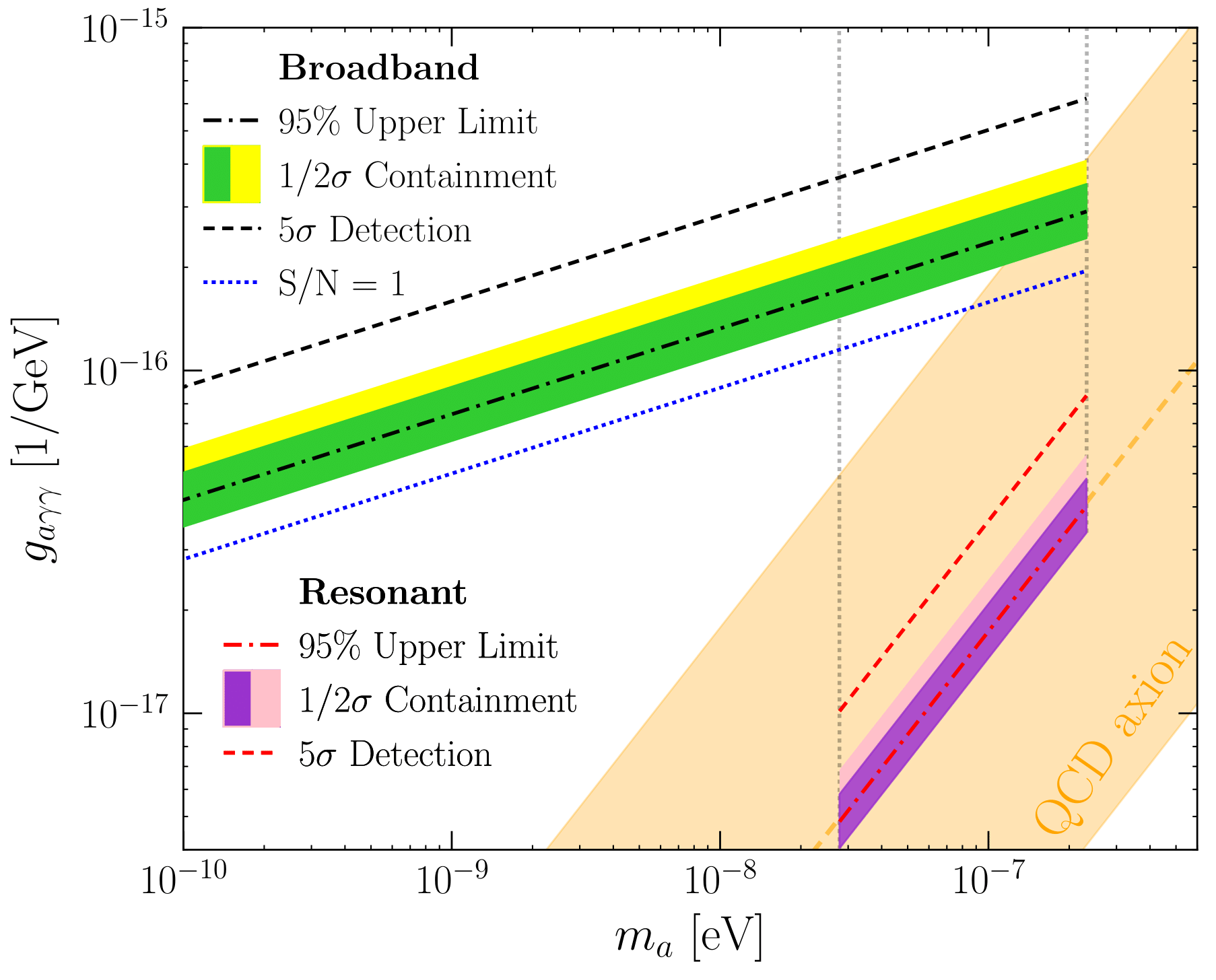Revealing the Dark Matter Halo with Axion Direct Detection
The next generation of axion direct detection experiments may rule out or confirm axions as the dominant source of dark matter. We develop a general likelihood-based framework for studying the time-series data at such experiments, with a focus on the role of dark-matter astrophysics, to search for signatures of the QCD axion or axion like particles. We illustrate how in the event of a detection the likelihood framework may be used to extract measures of the local dark matter phase-space distribution, accounting for effects such as annual modulation and gravitational focusing, which is the perturbation to the dark matter phase-space distribution by the gravitational field of the Sun. Moreover, we show how potential dark matter substructure, such as cold dark matter streams or a thick dark disk, could impact the signal. For example, we find that when the bulk dark matter halo is detected at 5$\sigma$ global significance, the unique time-dependent features imprinted by the dark matter component of the Sagittarius stream, even if only a few percent of the local dark matter density, may be detectable at $\sim$2$\sigma$ significance. A co-rotating dark disk, with lag speed $\sim$50 km$/$s, that is $\sim$20$\%$ of the local DM density could dominate the signal, while colder but as-of-yet unknown substructure may be even more important. Our likelihood formalism, and the results derived with it, are generally applicable to any time-series based approach to axion direct detection.
PDF Abstract